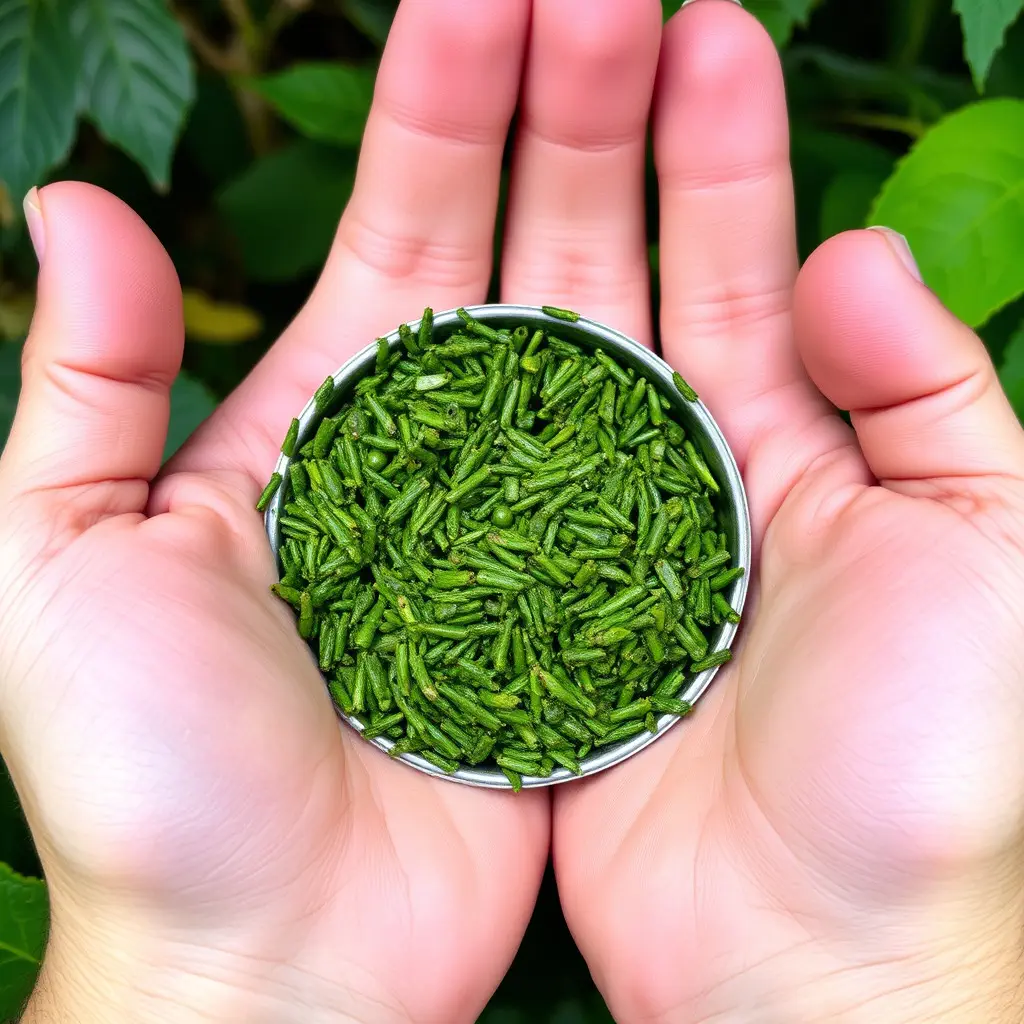Kratom, derived from the leaves of Mitragyna speciosa, offers a promising natural alternative for chronic pain management. Its active compounds interact with opioid receptors, providing analgesic effects and potentially reducing reliance on prescription painkillers. Traditional use in Southeast Asia, combined with modern research, highlights kratom's multi-faceted mechanism of action, including mood enhancement and anti-inflammatory properties. This safe herb presents a non-pharmaceutical solution for persistent pain, addressing global challenges in conventional chronic pain management.
Chronic pain is a prevalent and challenging condition, often managed through conventional medications with potential side effects. Kratom, a natural herb, emerges as an alternative approach to alleviating chronic pain without the risks associated with prescription drugs. This article explores kratom’s mechanism of action, its effectiveness backed by scientific studies and personal testimonials, and how it offers a promising non-addictive solution for those seeking relief from persistent pain.
- Kratom and Chronic Pain: An Alternative Approach
- – Discuss the prevalence and challenges of chronic pain management using conventional medications.
- – Introduce kratom as a natural alternative with potential analgesic properties.
Kratom and Chronic Pain: An Alternative Approach
Kratom, derived from the leaves of the Mitragyna speciosa plant, has gained attention as a potential alternative for chronic pain management. For individuals struggling with persistent pain and seeking non-pharmacological options, kratom offers a unique approach. Its active compounds, including mitragynine and 7-hydroxymitragynine, interact with opioid receptors in the brain and body, providing analgesic effects.
This natural herb has been used traditionally for centuries in Southeast Asia to manage pain and fatigue. Modern research suggests that kratom’s mechanism of action is multifaceted, involving not only pain relief but also mood enhancement and potential anti-inflammatory properties. As a result, many people turn to kratom as a way to reduce their reliance on prescription painkillers or other medications, offering a promising alternative for chronic pain management while potentially mitigating some of the risks associated with long-term pharmaceutical use.
– Discuss the prevalence and challenges of chronic pain management using conventional medications.
Chronic pain management using conventional medications is a significant challenge worldwide. Despite advancements in medical science, many individuals struggle with persistent pain that does not respond adequately to typical treatments. This has led to an increased reliance on prescription painkillers and other medications, often resulting in a cycle of dependence and potential side effects. The search for alternative solutions has become more prominent, especially with the growing awareness of the limitations and risks associated with long-term use of pharmaceutical interventions.
Kratom, derived from the plant Mitragyna speciosa, has emerged as a potential natural remedy for chronic pain management. Its usage has gained traction among individuals seeking an alternative approach to cope with persistent pain conditions. Kratom’s ability to interact with opioid receptors in the brain and body offers a unique mechanism of action that could reduce the need for prescription medications. However, further research is essential to understand its full potential and ensure safe and effective use, particularly regarding dosage and long-term effects.
– Introduce kratom as a natural alternative with potential analgesic properties.
Kratom, a natural herb derived from the plant Mitragyna speciosa, has gained attention as a potential alternative for chronic pain management. Its analgesic properties have been recognized and utilized by various cultures for centuries. The active compounds in kratom, known as alkaloids, interact with opioid receptors in the body, offering a non-pharmaceutical approach to alleviate persistent pain without the side effects often associated with prescription medications.
This alternative solution could be particularly beneficial for individuals seeking to reduce their reliance on opiate-based prescription painkillers. By providing a natural and potentially safer option, kratom offers a promising avenue for those struggling with chronic pain. Further research into its effectiveness and safety profile is ongoing, but initial studies suggest that kratom may offer relief while minimizing the risks associated with long-term use of traditional medications.
Kratom offers a promising natural alternative for managing chronic pain without relying heavily on prescription medications. By understanding its potential analgesic properties and incorporating it into a comprehensive pain management strategy, individuals may find relief while potentially reducing their need for traditional drugs. Further research and exploration are needed to unlock kratom’s full potential in this area.






